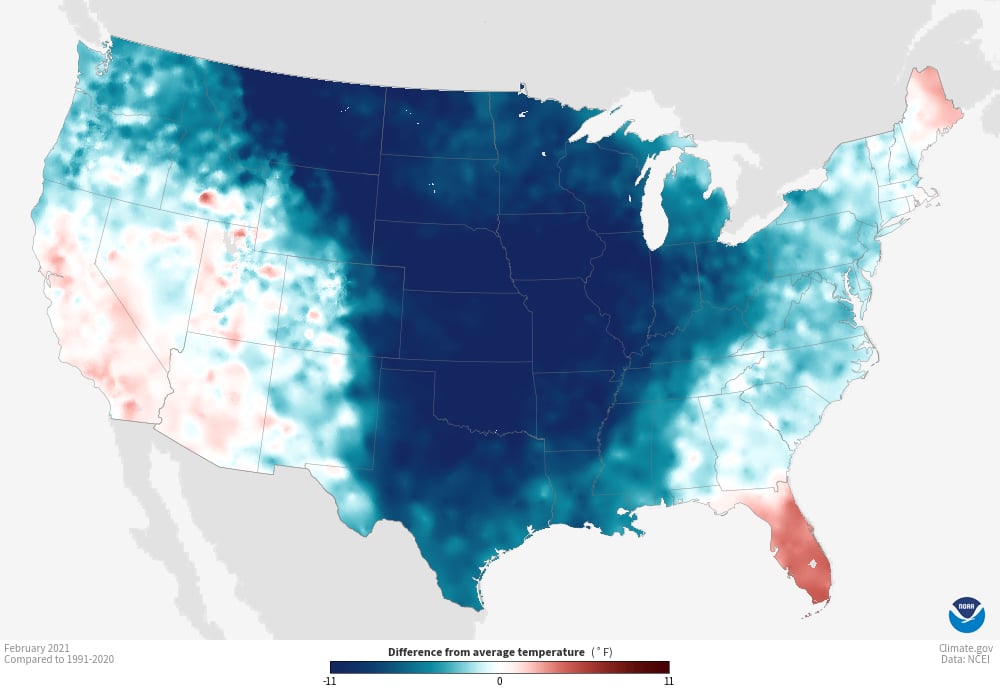This post was originally published on Eco Watch
Far above Earth’s poles, swirling in the frigid stratosphere, are the polar vortexes: massive, freezing whirlwinds that strengthen in the winter and weaken in the summer. Right now, despite being in the dead of winter, Antarctica’s vortex is undergoing an unprecedented weakening, causing a massive heat wave across the continent.
“This heat wave is a near-record (or record) event for the region of Antarctica it’s having the biggest impact on,” Edward Blanchard, an atmospheric scientist at the University of Washington, told The Washington Post in an email.
Antarctica’s vortex has weakened significantly in July, causing temperatures on massive swathes of the continent to soar to more than 50 degrees (10°C) above normal levels while pushing massive amounts of freezing air toward the equator.
These vortex weakenings are usually caused when warm air very quickly rises to the top of the vortex, destabilizing it.
Amy Butler, an atmospheric scientist at the National Oceanic and Atmospheric Administration, told The Washington Post that atmospheric waves have jostled the vortex this year, leading to high-altitude temperatures to soar in a sudden stratospheric warming (SSW) event.
Every winter, the polar vortex, a ring of stormy weather, forms high above Antarctica in the stratosphere.
This year, the vortex is showing signs of warming & being disturbed
A disturbed vortex may contribute to stormier conditions in NZ & Australia in late July & August. pic.twitter.com/AUxVd60ytk
— NIWA Weather (@NiwaWeather) July 13, 2024
This year’s Antarctic SSW is already leading to unusually cold temperatures in the southern hemisphere, with Australia, New Zealand and the Southern Cone of South America experiencing unusual cold fronts. SSWs may not be the only factor in the vortexes destabilizing, however. Earth has seen record high temperatures since July, which scientists believe may have been a factor here. Antarctica has been warming twice as fast as the rest of the planet, according to a 2023 article in the journal Nature, as The Washington Post reported.
SSWs can have immense consequences on their respective hemispheres. In January 2014, an SSW led to a harsh winter in the U.S., causing subzero temperatures in multiple states. 2021’s SSW was particularly brutal, leading to a devastating winter when much of the continental U.S. saw temperatures dip well below zero and during which most of Texas’ electrical grid infamously went dark.
There’s typically a delayed effect between an SSW and colder weather farther from the poles, which can take up to a month. With the Antarctic’s record-high temperatures and SSW continuing, it’s hard to say to what extent this will have on conditions in the southern hemisphere or how far toward the equator areas will be affected in the coming weeks.
The United States’ extremely cold winter in 2021. NOAA
Michael Dukes, director of forecasting at MetDesk, told The Guardian that most scientists have thought that the most significant effects of human-caused climate change would happen at the poles. “This is a great example of that,” he said. “In Antarctica generally that kind of warming in the winter and continuing in to summer months can lead to collapsing of the ice sheets,” he added.
The post Antarctica’s Record Heat Wave Brings Temps 50°F Above Normal appeared first on EcoWatch.


